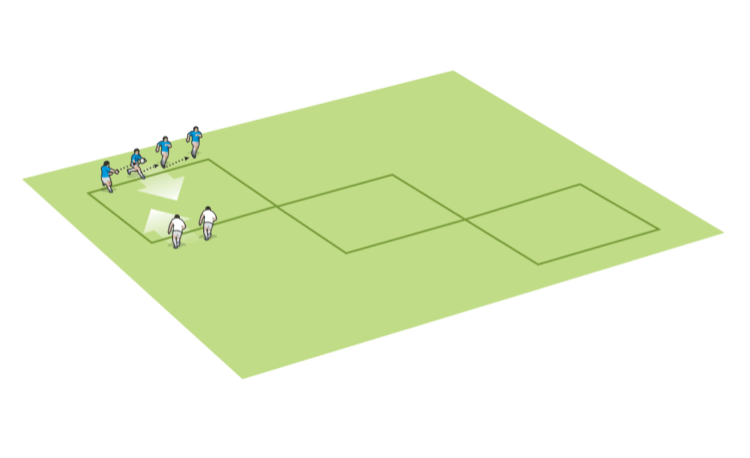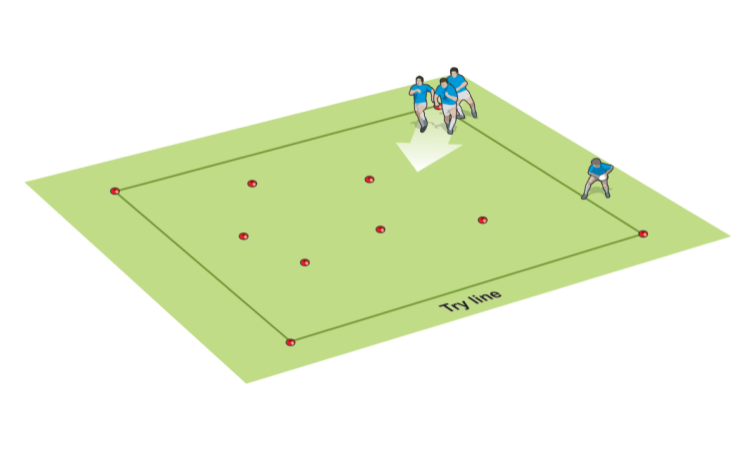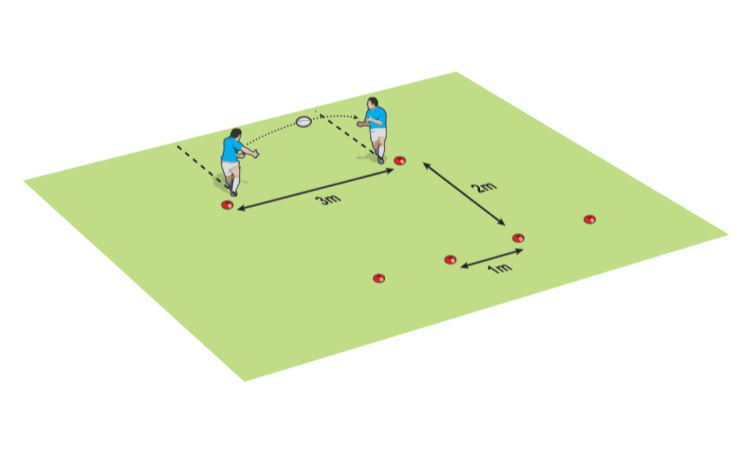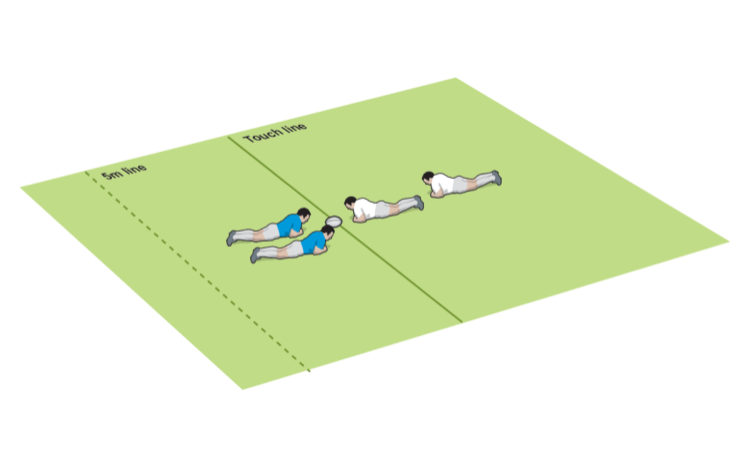You are viewing
1 of your 2 free articles
Ready, set, free pass
Create pace onto the ball from a “free pass” to a static player by encouraging your players to organise themselves quickly and work in threes.
When the rules state that a free pass has to be to a static player, your players have to be at ease with repositioning themselves to be able to generate some pace onto the ball.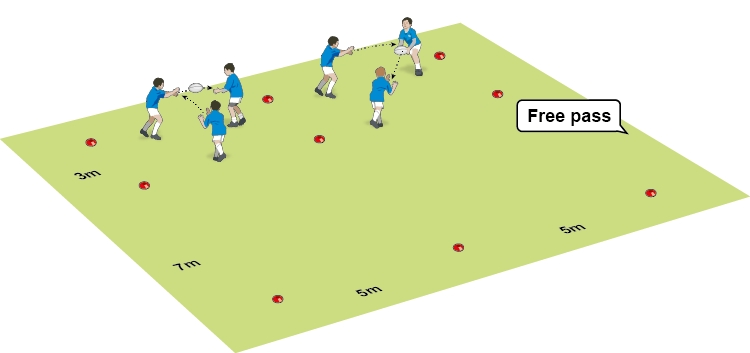
- Put two groups of three players each in one small box. Have them pass the ball between themselves within their groups.
- Shout “free pass”.
- The ball carrier comes to the front of the small box, and the other players align themselves ready for the free pass.
- When both groups are ready, shout “pass”.
- The first pass must go to a player who’s standing still.
- The ball carrier then runs or passes so that the team reach the other end first.
- You can make it optional for the teams to make two passes.
- Develop by adding a defender who starts 7m back and comes forward after the pass.
TECHNIQUE
- Stand flat for the first pass. Why pass it 2m backwards if it means you lose that ground.
- Have a second player running onto the next pass.
- Make the first pass a short pass.
- Hands up ready to receive the first pass.
Related Files
Newsletter Sign Up
Coaches Testimonials

Gerald Kearney, Downtown Las Vegas Soccer Club

Paul Butler, Florida, USA

Rick Shields, Springboro, USA

Tony Green, Pierrefonds Titans, Quebec, Canada
Subscribe Today
Be a more effective, more successful rugby coach
In a recent survey 89% of subscribers said Rugby Coach Weekly makes them more confident, 91% said Rugby Coach Weekly makes them a more effective coach and 93% said Rugby Coach Weekly makes them more inspired.
Get Weekly Inspiration
All the latest techniques and approaches
Rugby Coach Weekly offers proven and easy to use rugby drills, coaching sessions, practice plans, small-sided games, warm-ups, training tips and advice.
We've been at the cutting edge of rugby coaching since we launched in 2005, creating resources for the grassroots youth coach, following best practice from around the world and insights from the professional game.






